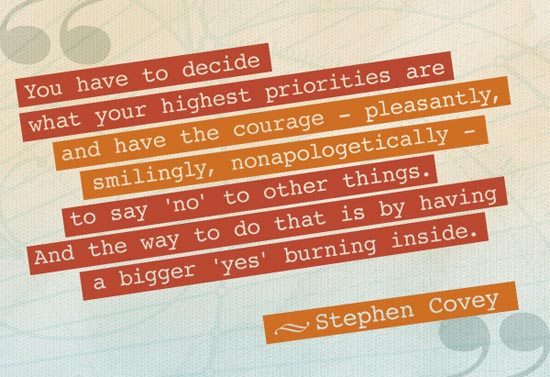Success Advice
6 Classic Lessons We Can All Learn From Stephen Covey
Dr. Stephen Covey, wrote the best-selling book in 1989 titled “The 7 Habits of Highly Effective People”. His death saddened many, but most people have been grateful for his life and work. His book has several insights and splendid ideas that have inspired many.
The 7 Habits has a way of seeping you in, with several life lessons touching on almost every aspect of life from marriage to parenting to leadership.
More than 20 million copies of The 7 Habits of Highly Effective People have been sold and the book has been named as one of the most influential management books by most organizations including Forbes and Time Magazines. In 1996, Stephen Covey was listed among the 25 Most Influential Americans by the Times because of his hard work and efforts on the book.
Stephen Covey believed that success occurs when one aligns their values with timeless and universal principles existing in the world. He teaches that values are what govern the behavior of people, but principles are what ultimately determine the consequences. Besides his best-selling book of 1989, he also wrote “First Things First”, “The 8th Habit”, “The Seven Habits of Highly Effective Families”, and “Principle-Centered Leadership”. From his achievements and great work, here are 6 classic lessons we can learn from Stephen Covey.
1. Putting First Things First
One of the most important lessons that we can learn from Covey is putting first things first. Covey has a chapter that introduces today’s conventional wisdom framework of being able to distinguish the urgent from the important tasks. He says:
“Easy leadership is putting first things first”.
In order to be a great leader, one has to prioritize the most important things before others, and has to distinguish the most critical from the insignificant and place the critical first.
First in order, then first in priority and first in rank. If the critical is placed first, and given the critical focus and attention, there is certainly effectiveness in leadership with soar.
2. Begin With The End In Mind
This was his second habit, and he shows us that it is easier to do something in the short run than in the long run. It is important in everything that we do, we ask ourselves what we are trying to accomplish. It is more adept at answering this question for the short and medium term goals. You will realize, you can getter better at beginning with the end in mind for longer term goals but you my still have to put in more effort to get there. By nature, long term goals are less clear and the path to achieving them is also less certain. It is therefore important that we learn to articulate these goals and then reverse to try engineering them from the back in ways that are actionable in the short run.
3. Think Of Win-Win Situations
Covey teaches us to always think of Win-Win Situations. We can learn to look for solutions that can benefit everyone in the society. According to him:
“This is a frame of the heart and mind that always seeks mutual benefit in all interactions of humans”.
According to Covey, Win-Win means agreements are mutually satisfying and beneficial. He says that the way people think in terms of dichotomies; win or lose, hardball or softball, strong or weak is fundamentally flawed.
4. Stick To Your Main End Goal
Do not be swayed from your main life goals. Covey states that,
“The main goal is to keep the main goal the main goal”.
It is important that you never lose sight of the big picture and always be determined by keeping the main thing the main thing.
Failure is hugely contributed to by losing focus. Even though you have a good start, it is essential that you avoid all sorts of distractions and attractions you may experience in life that may sidetrack you. Be focused on the main thing, and keep it the main thing!
5. Your Character Is Critical
Stephen Covey teaches us that our character is a composite of our habits, and therefore, we should know that character is very critical. Watch your habits because they determine your character and it is your character that defines your life. It is difficult to rise higher than your character’s fortitude. Your character forms the foundation for your life and for you to change your life, you have to change your character.
6. Be Good At Listening
Lastly, we first need to understand, to be understood. Listen to what other people have to say and try to understand them. Equally, they will grant you the same courtesy and respect your opinions just as you have shown them. Stephen writes,
“We have a tendency to rush things, and fix them up with good advice”.
However, we often fail to take time to diagnose and really understand the problem. This message is very crucial to effective interpersonal communication.
R.I.P Stephen Covey
Your Legacy Lives On!

Change Your Mindset
The Silent Skill That Makes People Respect You Instantly
What truly earns respect and why most people go about it the wrong way

Everybody craves respect but not everyone earns it. Some people believe that a title, years of experience, or a position of authority automatically entitles them to respect. (more…)
Entrepreneurs
The Essential Skills Every Entrepreneur Needs In 2026
Success in the digital age isn’t about luck. It’s about mastering the skills that separate dreamers from doers.

When I was 22 years old, I started my first side hustle as a ghostwriter. (more…)
Did You Know
The Success Patterns You Inherited (And Didn’t Notice)
Your family history may hold the key to why you think, act, and feel the way you do today.

Who are you? Your experiences and your family’s narratives and legacies contribute to your identity. Your ancestry contains individual traits and forces that have been inherited over the years. It also carries the fights and victories of your forebears and older family members. (more…)
Shift Your Mindset
11 E’s That Define Every Great Leader And Why Most People Miss Them
If you’ve ever felt the pull to lead, this is your roadmap to turning inner potential into lasting influence.

What Is Leadership, Really?
Leadership is far more than a title or position. It’s the ability to envision a future, inspire others, and align people toward a shared goal. (more…)
-

 Success Advice4 weeks ago
Success Advice4 weeks agoInside the TikTok Resume Hack That’s Fooling Recruiters (For Now)
-

 Change Your Mindset4 weeks ago
Change Your Mindset4 weeks agoThe One Leadership Habit That Separates the Great From the Forgettable
-

 Personal Development3 weeks ago
Personal Development3 weeks agoThis Silent Habit Might Be Sabotaging Your Career
-

 Business3 weeks ago
Business3 weeks agoWhy Your E-Commerce Fulfilment Is Probably Broken (And How to Fix It)
-

 Shift Your Mindset2 weeks ago
Shift Your Mindset2 weeks ago11 E’s That Define Every Great Leader And Why Most People Miss Them
-

 Did You Know2 weeks ago
Did You Know2 weeks agoThe Success Patterns You Inherited (And Didn’t Notice)
-

 Business2 weeks ago
Business2 weeks agoThe Hidden Money Pit in Your Operations (and How to Use It)
-

 Entrepreneurs1 week ago
Entrepreneurs1 week agoThe Essential Skills Every Entrepreneur Needs In 2026



























8 Comments